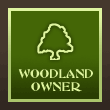If You Go Down To The Woods Today …
Remember ‘Swampy’? A name that will go down in the history of our collective consciousness as the famous eco-warrior spent the best part of a week a complex series of tunnels dug in the path of a new extension to the A30 in Devon.
He spearheaded a movement that is gathering momentum across the UK as more and more green land is lost to development every year. The Woodland Trust is championing the cause to save the environment by challenging the Government’s Planning Bill, and even multi-nationals like Ikea have seen the wood for the trees and are donating a square foot of forest every time customers swipe their Ikea Family loyalty card. Now it’s the turn of private individuals who are quietly but consistently saving a part of our natural heritage by securing their own acreage of woodland.
Why Buy ?
Over the past few years there has been an upsurge in both supply and demand of private woodland which is enjoying a rise in value, and which is now available from as little as five acres. Woodland is still relatively cheap compared to land for development purposes, and is available throughout all areas of the UK.
So, why do people buy their own wood? The obvious answer is to reduce carbon footprint by putting something back, or to stop the gradual erosion of natural habitat that is happening so fast in the UK. It’s also a good investment as buyers recognize its immediate benefits in terms of providing a safe, natural environment for families and friends to enjoy, with walks, picnics, treasure hunts, children’s parties and camping all freely available. Non-permanent structures such as sheds or tree houses in woodland can be erected and camping in a caravan is allowed for up to 28 days per year. Ideal for those who don’t want to travel too far from home.
More active pursuits are also showing signs of a growth spurt with woodland walks, cycling, paintballing, archery and tree climbing popular with families. Investors are turning over a new leaf and putting their money into woodland management such as coppicing, tree planting, harvesting and logging whilst country field sports such as deer stalking, game shooting and falconry, are all flourishing.
Woodland is also an investment for the future as it will naturally grow in value, is exempt from inheritance tax and can be passed down the family tree.
In the minority but certainly something to think about is a ‘green burial’ which is now seen as friendlier to the environment and more natural than cremations!
How to buy?
It’s a fairly straightforward process as there are no chains, no furniture and no leases and usually no legal charges to register or to worry about. Once budget and location are agreed, then sourcing woodland is relatively easy as there are a number of web based companies to be found on the web eg: www.vantageland.co.uk and www.woods4sale.co.uk Alternatively, specialist land agents can offer advice and help.
Joint ownership has the added advantage of shared responsibilities as well as reducing the costs involved. If there are four or less joint owners then everyone can be put onto the Land Registry title. Alternatively a trust structure or limited company might be more attractive.
The ‘Small Woods Assocation’ or the Woodland Trust, will give advice on caring for woodland together with information on grant aids for planning the planting of new trees.
Where to Buy?
Location is still the key to success and investors should head to the woodland in the south east which is currently in high demand. Cost depends on location, but expect to pay between £4-8,000 per acre.
Finally, if the thought of saving the planet is appealing but finance is an issue then consider pooling resources and buying with a friend or a syndicate of like minded folk. Alternatively, join the ‘Woodland Trust’ and salve your conscience with a donation more suited to your pocket – it’s a small but important step to supporting your very own Swampy, but much less newsworthy!
Source: Anna Donaldson
